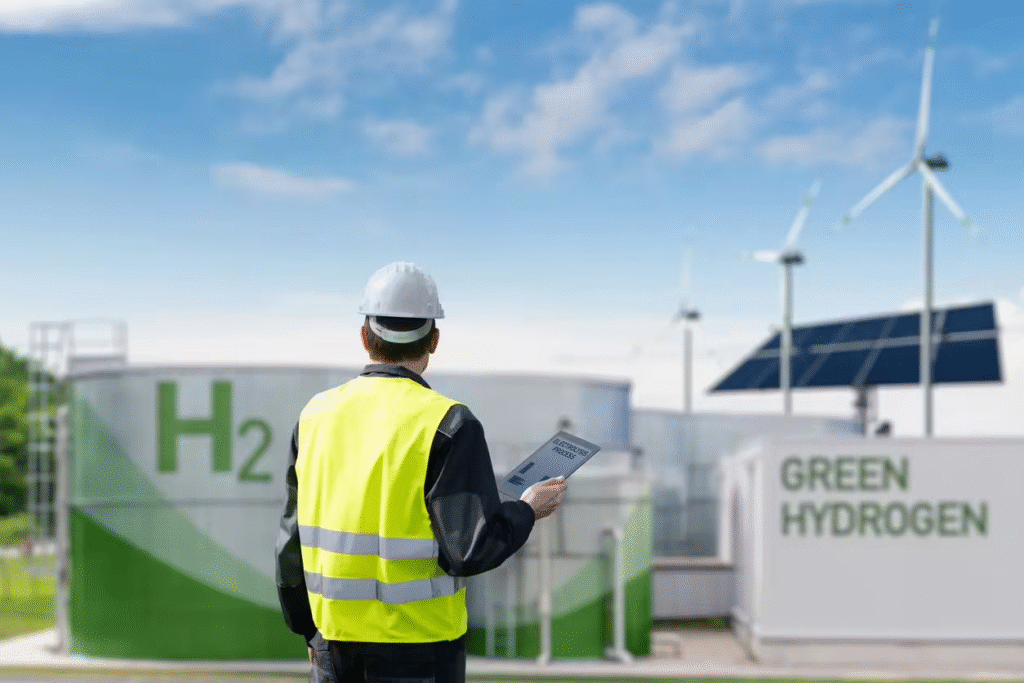A Mistake That Could Change the Hydrogen Game
Sometimes breakthroughs happen by accident — and that’s exactly how Tulum Energy got its start.
Between 2002 and 2005, engineers working with Techint Group noticed something odd. While running an electric arc furnace, their carbon electrodes were growing, not shrinking.
They had unknowingly triggered methane pyrolysis, a reaction that splits methane into pure hydrogen and solid carbon — without releasing carbon dioxide.
At the time, no one cared. Hydrogen wasn’t a big deal in the early 2000s. The experiment was documented and then forgotten.
Rediscovery of a Lost Opportunity
Fast forward 20 years. Techint’s venture capital arm, TechEnergy Ventures, was hunting for low-emission ways to produce hydrogen.
That’s when someone at Techint remembered the old discovery.
“But we already have that,” CEO Massimiliano Pieri recalls someone saying. The team dusted off the old research and saw its potential.
That rediscovery led to the launch of Tulum Energy, a startup built around a once-forgotten innovation.
$27 Million Raised to Build a Pilot Plant
Tulum recently secured $27 million in seed funding, the company shared with TechCrunch. The round was led by TDK Ventures and CDP Venture Capital, with support from:
- Doral Energy-Tech Ventures
- MITO Tech Ventures
- TechEnergy Ventures
The funding will be used to build a pilot plant in Mexico, right next to an existing Techint Group steel plant.
If the pilot succeeds, the steel plant could become Tulum’s first customer — buying both hydrogen and carbon for its operations.
How Tulum’s Hydrogen Process Works

Tulum uses methane pyrolysis, a process that breaks down methane without oxygen. The results are:
- Hydrogen gas, which can be used as clean energy
- Solid carbon, a byproduct that can also be sold
Unlike many competitors, Tulum doesn’t need expensive catalysts to make the reaction work. It uses a modified electric arc furnace, a tech already common in the steel industry.
This makes the system cheaper and easier to scale.
Competitors in the Space
Tulum isn’t alone in pursuing this method. Other startups include:
- Modern Hydrogen
- Molten Industries
- Monolith
But Tulum’s simplified approach gives it a head start, says Pieri.
Big Potential at Lower Cost
At full scale, Tulum’s plant could produce:
- 2 tons of hydrogen per day
- 600 tons of solid carbon per day
And the cost? Tulum believes it can produce hydrogen for around $1.50 per kilogram in the U.S.
That’s only 50 cents more than current fossil-fuel-based hydrogen — and much cheaper than many green hydrogen alternatives.
Plus, it generates no CO₂. And any money earned from selling carbon could bring that cost down even more.
Final Thoughts
Tulum Energy is breathing new life into a long-overlooked discovery — and it could reshape the hydrogen industry.
With zero emissions, a low production cost, and a ready-made industrial use case, Tulum is turning a decades-old mistake into a modern clean-energy solution.
Its success could bring us one step closer to a cleaner hydrogen future — powered not by chance, but by vision.
Quick Summary
- Tulum Energy is using an old pyrolysis discovery to create clean hydrogen.
- Its process splits methane into hydrogen and solid carbon with no CO₂ emissions.
- The company raised $27 million to build a pilot plant in Mexico.
- Unlike others, Tulum doesn’t use expensive catalysts.
- It targets $1.50 per kilogram hydrogen — cheaper than most green methods.
- The tech could power steel plants and other industries needing low-cost hydrogen.
